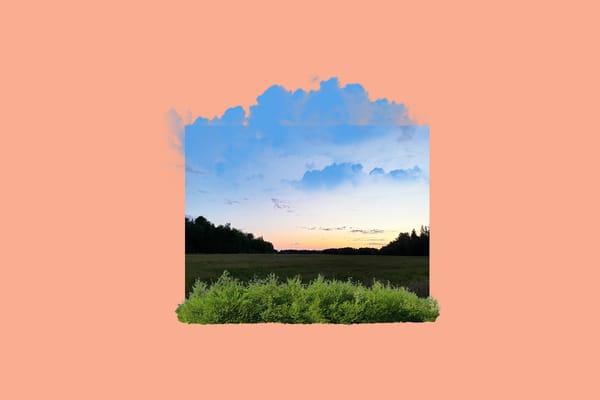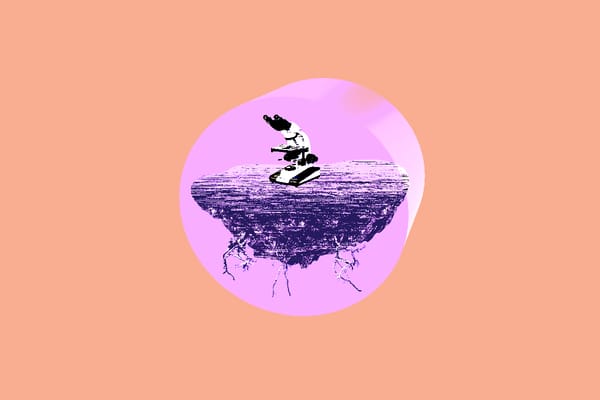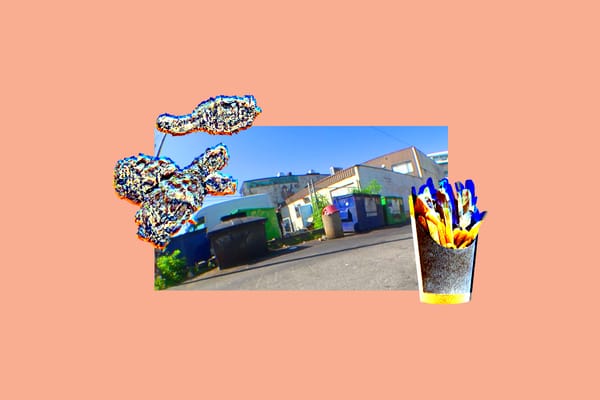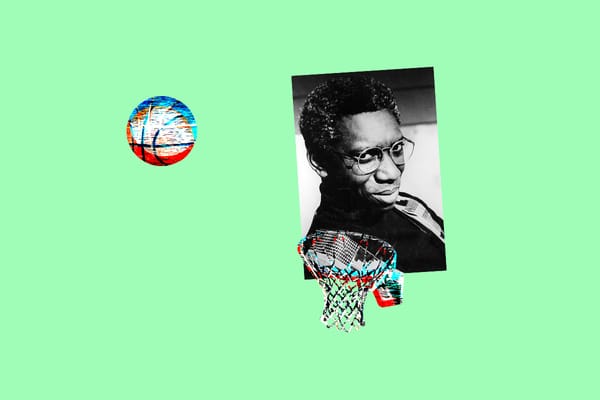In The Galaxy Light of The Miracle
Strained parallels between balcony birds and the sad means and ends of social media success.
The house sparrows that frequent the bird feeder on my balcony like to swing from it—one, two, eight of them at a time. They don’t often squabble over the suet block, instead making space for one another even as room on the feeder grows limited. I like to watch them chirp and flit outside my window. They puff their feathers, preen on the railing, share in the strange, hardened mixture of fat, fruit, and bugs hanging in the cool morning air.
I first noticed it in the comment section. Professional Skateboarder A.) would post a trick to Instagram, and Professional Skateboarder B.) would shoot off a short, excited response.

But Professional Skateboarder B.) wouldn’t just comment on one post. It was all of them. Follow enough professional skateboarders and you’ll see it take shape, too. Every skater in every skater’s comments, leaving a trail of “prayer hands” and fire emojis in their wakes. While supportive, positive messages are obviously not a bad thing (and should be encouraged!), patterns started to emerge for those who steadily scrolled their feeds. Phrases that appeared copy and pasted from one post to the next. Andrew Brophy was notorious enough to inspire SLAP message board threads dedicated to collecting (and skewering) his constant exclamations at his colleague’s clips.
Now we know that this is a technique used to organically grow follower counts. The more you comment, the higher the likelihood that people see your profile, interact with it, and potentially press that “follow” button—basic online brand-building stuff by today’s standards. Cringey, yes, but not terrible. Together the skateboarders creating a self-sustaining promotional ecosystem. One that requires only a quick, gracious tap of the keyboard as the algorithm ushers you along.
There’s an order of use to the bird feeder on my balcony—a hierarchy of sorts. Since the starlings are bigger and more prone to scream and peck if anyone else tries to eat beside them, the house sparrows are left to patter around on the ground, waiting for crumbs to drop from above until their turn comes. The big birds' success provides a not-insignificant hustle for the smalls if they can make it work.
A tired Lady Gaga meme, a bloody one-sided street fight where a loudmouth is served a comeuppance, a simple tweet reacting to another tweet in a vaguely humorous manner. When a Twitter post goes viral, whatever it may be, there’s a high likelihood that it’ll be “piggybacked” by companies looking to market their products. If you’ve spent enough time on Twitter lately, you’re sure to have seen this in action.
A tweet from a relatively small account reaches a certain level of traction, and the author of the tweet is approached by a company who offers them about $25 to tweet about their product in the same thread—exposing that product to the thousands of eyes quietly wondering why this TikTok is so popular. It’s a vacuous, parasitic promotional strategy, that judging by the limited responses these attachment tweets get, is limited in its effectiveness.
It also showcases the strange morality of a viral post. In the above tweet reacting to a viral tweet that went viral itself, the first follow-up post is a link to a gofundme for a trans youth in need. The following tweets are for Galaxy Lights, an alleged weight loss technique, and a “detox mask” featuring an uncomfortably close-up video of someone getting blackheads pulled from their face.
Does the viral tweet's author bear any responsibility to use their sudden platform to boost an urgent cause? Is that intention undone at all by the subsequent hawking of cheap products? Is this simply another festering symptom of late-stage capitalism? Whatever the case, it seems this tortured cycle of virality continues as long as we “cannot stop vibing!!!!!” with it.
When the feeder gets busy is when the crows take notice. They barge their way onto the balcony, taking the space from the starlings and sparrows. But they’re far too big for the suet block feeder, their bodies swallowing the small metal cage. Unable to hang on, they jump and dive, crashing into it in hopes of some morsel of food breaking free. It is clumsy, awkward work, and I know it’s done when I hear the feeder get knocked from its hook and crash to the ground.
If something goes viral online, it’s because it has some inherent initial value. Maybe it’s a funny meme, a vital news story, or a puppy sitting on a duck’s back. It gets shared because we want others to interact with it, and in turn, interact with us. Virality always has an upper limit, though—an endpoint and sometimes a specific time of death.
This usually happens due to oversaturation. When a meme gets flattened with overuse, usually telegraphed by celebrities and companies taking notice and twisting a subject to their own hollow ends. Not in the way we do, but in the way they always do.
A daft corporate interpretation of something momentarily popular for momentary gains that usually ends in public backlash. These are the final blows. When all meaning is wrung from a meme or post. Its spirit will still show up from time to time, struck by its own quick demise and left to haunt this online space.
That’s the way this system is designed to work. There’s almost a gamesmanship to it. We compete to see how many times we can bludgeon a subject before it’s dust. Then when the feeder winds up empty and broken on the ground, we wait for someone to hang it back up again anew.





